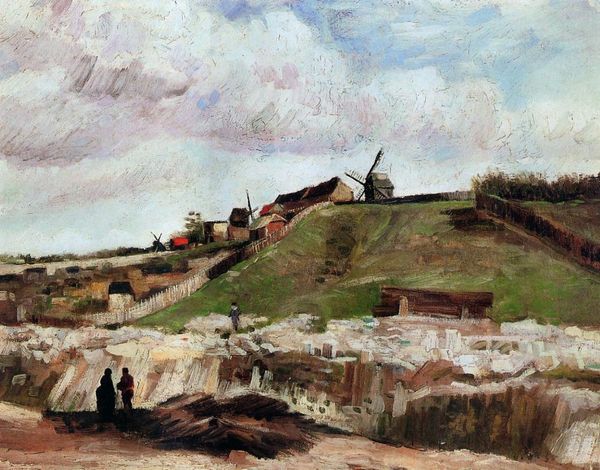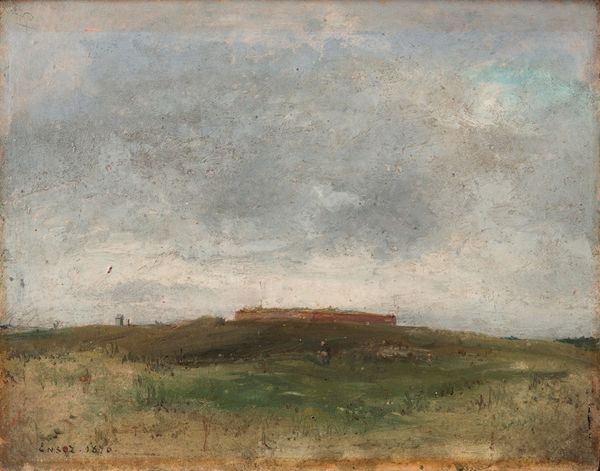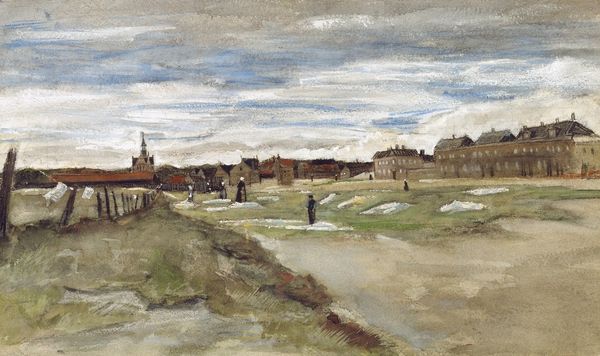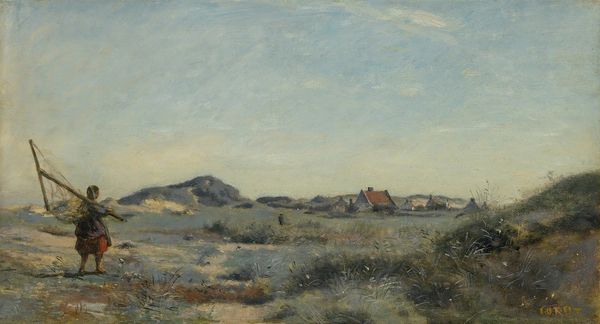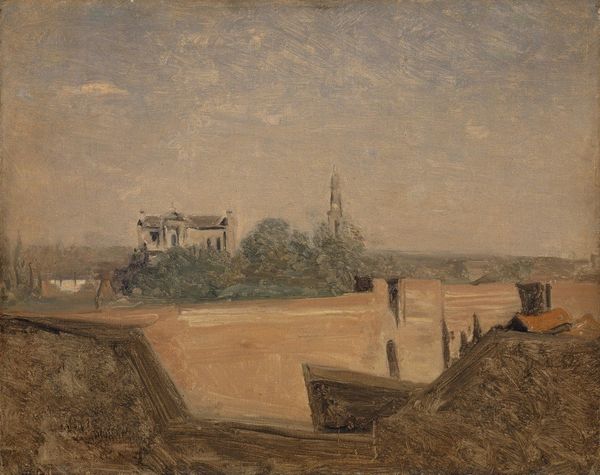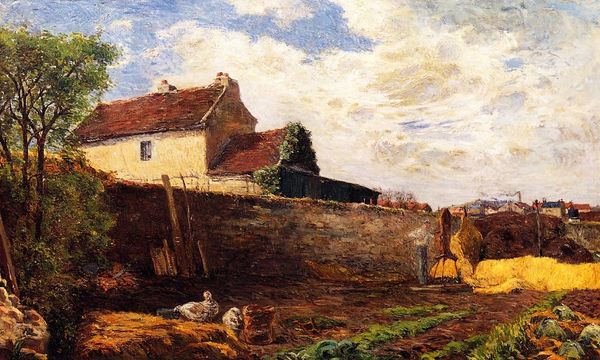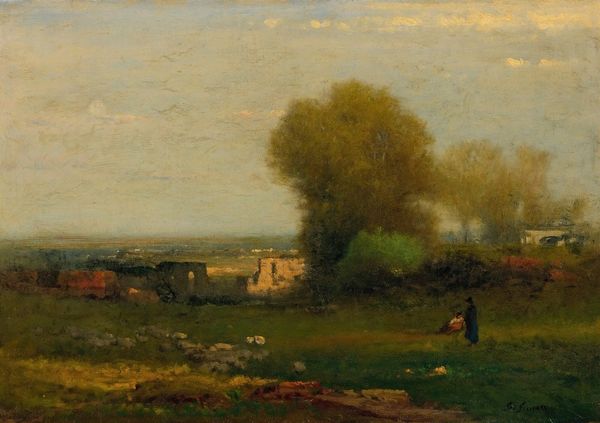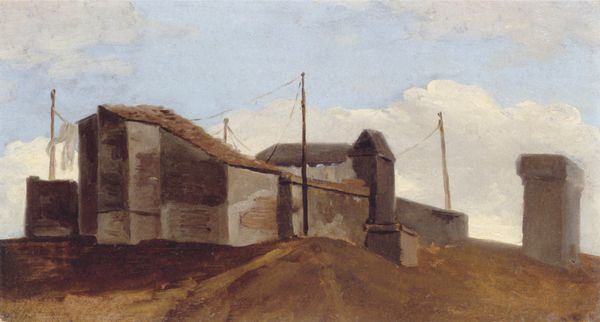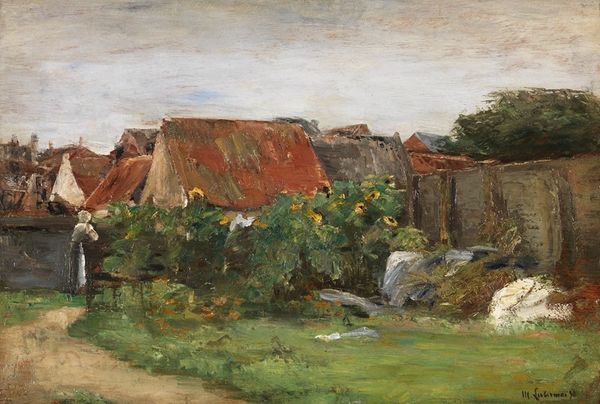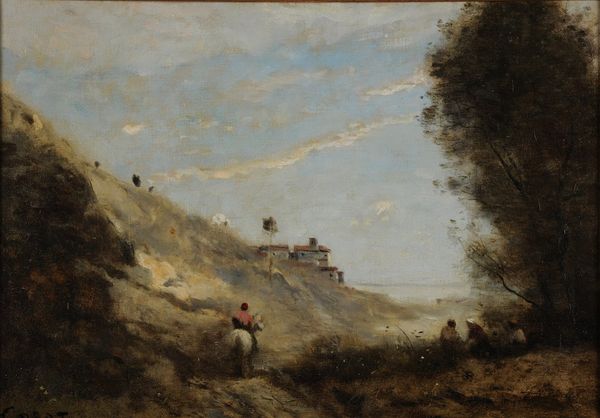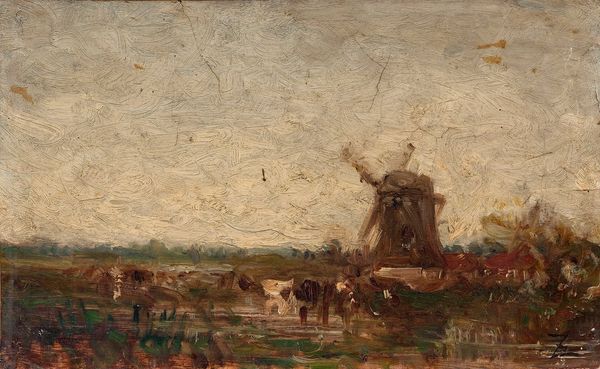
painting, plein-air, oil-paint, impasto
#
painting
#
plein-air
#
oil-paint
#
landscape
#
oil painting
#
impasto
#
cityscape
#
post-impressionism
Copyright: Public Domain: Artvee
Curator: Before us hangs "The hill of Montmartre with stone quarry", an oil painting by Vincent van Gogh dating back to 1886. It’s interesting how the materials and techniques shape our experience of this Parisian cityscape. Editor: My first thought? Melancholy. It’s a grey palette, softened, almost muted. It's not the Van Gogh we immediately conjure, yet, I sense a simmering unease despite its rather humble, commonplace subject matter. Curator: Absolutely. Montmartre in the 1880s was experiencing intense change and economic division, shifting from a rural village to an increasingly urban space, a space being reshaped, perhaps violently, by the very stone quarry we see represented. Editor: Note the thickness of the oil paint—the impasto—it speaks volumes about his process. Van Gogh builds layer upon layer, the physicality hinting at the labor of creating, a physical record. Curator: The lone figure ascending the hill takes on a new dimension considering these socio-economic realities. He’s climbing towards, what? Progress? Perhaps he’s being forced upward and onward. What does that mean in relationship to gender, to labor? Is he a stonecutter or is he selling his services? Editor: He is dressed in blue. Given the date and context it can't be an accident. The colour jumps forward out of a palette of stone and dirt; almost too bright? Also notice the fences. All angles and converging lines—a maze and obstruction. I want to push harder into what those mean and how they shape what the people can or can't do, and that's built directly into the wood and wire. Curator: True, it echoes that sense of imposed boundaries – literally, as a border, but also figuratively. Who had access and who did not. In his depictions of the working class we have a clear awareness of the disparities present in the Paris he observed. Editor: And consider how the windmills are depicted, their arms like grasping hands, juxtaposed with the earth being excavated. I can’t separate the art from how he made it and why. Curator: These material remnants serve as potent symbols of labor and exploitation when read in context with Paris’ social inequalities at the time. Thank you for revealing such a compelling reading into Van Gogh's work. Editor: Thank you. Exploring how materiality shapes narrative is crucial in appreciating the artist's visual response to his changing surroundings and helps unlock a new appreciation.
Comments
No comments
Be the first to comment and join the conversation on the ultimate creative platform.
